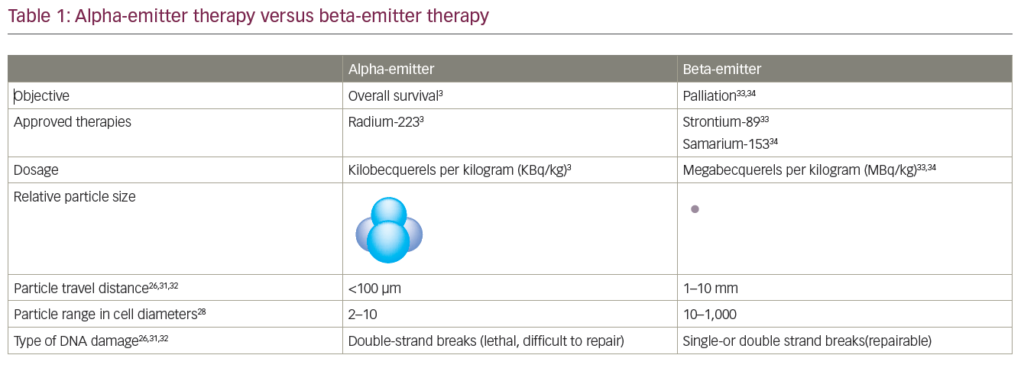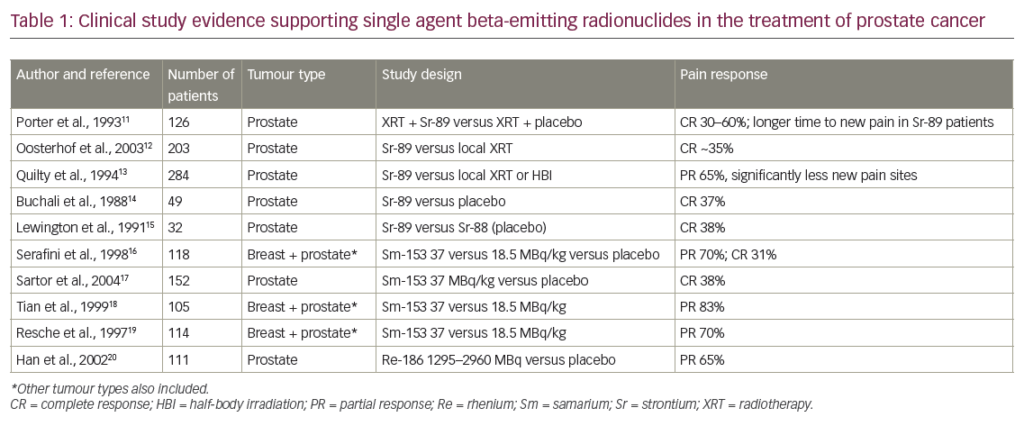Since the introduction of prostate specific antigen (PSA) screening, prostate cancer has become the most common male malignancy.1 To reduce overtreatment and functional morbidity associated with radical therapies, new approaches have been proposed, such as active surveillance and focal therapy. As we are dealing with multifocal tumours, validation and large acceptance of these modalities hinges on modern imaging development and validation, allowing accurate cancer identification and targeting. On the one hand, focal ablation requires good visualisation of significant tumour and confidence in the absence of significant tumour elsewhere. On the other hand, active surveillance may require the absence of significant cancer, e.g., negative imaging, in cases with minute cancer foci at biopsy. Important knowledge on modelling of cancer morphology – such as zone of origin and intraprostatic patterns of spread of organ-confined prostate cancers at histopathology – has been made available for imaging interpretation and treatment planning.2,3 Currently, magnetic resonance imaging (MRI) is the most important imaging tool for identifying low-volume prostate cancers, characterising tumours, helping patient risk stratification and enabling focused use of biopsy.4–7 In addition, recent advances in transrectal ultrasonography (TRUS) of the prostate, such as realtime tissue elastography and contrast-enhanced ultrasonography, allow better identification of cancer.
The main current and future imaging applications are for diagnosis, both for biopsy protocol and biopsy indication. Since most systematic and particularly saturation biopsies are taken from benign tissue, pre-biopsy imaging may reduce the number of biopsies. Using anatomical and functional imaging as triage tests in men with suspected prostate cancer because of a positive screening test and referred for biopsy thus seems to be the appropriate diagnostic pathway. This allows the use of a targeted biopsies strategy and has the potential to improve biopsy results by increasing the detection of clinically significant cancers, reducing the detection of clinically insignificant cancers and giving a more representative sampling of cancer (length and grade). The purpose of this article is to summarise the main current imaging techniques used for the diagnosis of localised prostate cancer and their role in patients with suspected prostate cancer.
Ultrasound Techniques
Transrectal Ultrasonography
TRUS is widely used to guide systematic transrectal prostate biopsy procedures. This imaging technique is effective for lesions located in the peripheral zone (PZ), but the observed heterogeneity of the transition zone (TZ) during TRUS prevents consistent detection of TZ cancers. In a study by Toi et al., suspicious lesions detected during TRUS significantly increased the likelihood of cancer detection by a factor of 1.8 (57.8 % versus 30.8).8 Likewise, subsequent biopsies from these lesions had an increased median percentage of cancer involvement in each biopsy core compared with randomly acquired biopsies (50 % versus 10 %, p<0.001) and were more likely to have a Gleason grade of 7 or higher (69.3 % versus 28.3 %, p<0.001).9 However, no specific information was provided by the authors about biopsy location (anterior versus posterior gland). In another study, consisting of 544 patients with abnormal PSA and a prostate cancer prevalence of 35 %, TRUS was found to have sensitivity and specificity of 41 % and 85 %, respectively.10 The positive predictive value of TRUS for prostate cancer identification in this study was as low as 53 %, highlighting the usefulness of such an imaging modality. A computer-based TRUS has been investigated11,12 and has shown potential to improve prostate cancer diagnosis, but further data are needed to confirm this finding.
Realtime Elastography
Realtime elastography is a promising modality for posterior cancer identification, but it needs to be validated. In a study by Walz et al.,13 realtime elastography alone did not allow identification of the prostate cancer index lesion with satisfactory reliability. However, the combination of realtime elastography and data from 12 randomised core biopsies has the potential to correctly identify the prostate cancer index lesion. In a study by Mitterberger et al.,14 84 patients with suspected prostate cancer and scheduled for prostate biopsies underwent realtime elastography, TRUS and MRI. The findings of realtime elastography were compared with those of the other examinations and pathological findings. Of the 84 patients, 36 had benign lesions and 48 had prostate cancer. The diagnostic sensitivity, specificity, accuracy, positive predictive value and negative predictive value were 91.7 %, 72.2 %, 83.3 %, 81.5 % and 86.7 %, respectively, for realtime elastography and 85.4 %, 63.9 %, 76.2 %, 75.9 % and 76.7 %, respectively, for TRUS (p>0.05). The specificity of realtime elastography (72.2 %) was significantly higher than that of MRI (44.4 %) (p=0.03). The realtime elastography findings were not significantly correlated with the pathological findings and PSA (p>0.05) and the diagnostic sensitivity of realtime elastography decreased along with the enlargement of the prostate. If realtime elastography is to be used as a diagnostic test to supplement clinical diagnosis of cancer, it has to be validated using detailed examination of radical prostatectomy specimens as a reference standard.
Contrast-enhanced Colour Doppler Ultrasound
Contrast-enhanced colour Doppler ultrasound (CECD-US) necessitates intravenous injection of microbubble US contrast agent. Mitterberger et al. reported significant benefit of CECD-US targeted biopsy compared with systematic biopsies.14 Targeted biopsies were performed in hypervascular areas in the PZ and compared with systematic biopsies. Cancer was detected in 559 (31 %) of 1,776 patients; in 476 (27 %) of the 1,776 patients, it was detected with CECD-US and in 410 (23 %), it was detected with systematic biopsies (p<0.001). The detection rate for CECD-US targeted biopsy cores (10.8 % or 961 of 8,880 cores) was significantly better than for systematic biopsy cores (5.1 % or 910 of 17,760 cores, p<0.001). Among patients with a positive biopsy for prostate cancer, cancer was detected by CECD-US alone in 149 patients (27 %) and by systematic biopsies alone in 83 (15 %) (p<0.001). Again, the diagnosis of anterior tumours with radical prostatectomy specimens as a reference standard was not studied. In a study by Taverna et al., 300 patients with suspected prostate cancer were randomised to have TRUS-guided systematic biopsies with or without targeted biopsies to suspicious areas on CECD-US imaging.15 Low sensitivity, specificity and accuracy of CECD-US were found with no significant difference for cancer detection rate between groups.
Multiparametric Magnetic Resonance Imaging
Multiparametric MRI (mp-MRI) of the prostate obtained prior to biopsy in patients with suspected prostate cancer was shown to be effective in both anterior and posterior zones of the gland2,16,17 (see Figure 1). In an extended series and using radical prostatectomy histopathology as a reference standard test, the sensitivity and specificity of mp-MRI for identifying significant cancer foci (i.e., with tumour volume>0.5 cm3) in clinically localised disease (including anterior prostate cancers) were 86 % and 94 %, respectively.2 The negative predictive value was 95 %. Mean cancer volume detected at MRI was 2.44 ml (range 0.02–14.5) and mean cancer volume not detected at MRI was 0.16 ml (range 0.01–2.4). However, the use and diffusion of mp-MRI requires a degree of discipline in its conduct, reporting and evaluation. A recent European MRI Consensus Panel16 recommended that this modern imaging modality needs to be delivered in a quality-controlled manner with uniformly high standards and used as a test prior to biopsy. T2-weighted, dynamic contrast-enhanced and diffusion-weighted MRI were the key sequences incorporated into the minimum requirements but spectroscopy was not recommended. A five-point scale was agreed upon for specifying the probability of malignancy, with a minimum of 16–27 prostatic sectors of analysis to include a pictorial representation of suspicious foci (see Figure 2).
Targeting Biopsies to a Suspicious Area
Targeting biopsies to an MRI-suspicious area was proven to be very effective in improving detection of anteriorly located cancers, which represent 20 % of the largest cancers in unselected patients suspected to have prostate cancer, beyond the area sampled by posterior biopsies.2,18 This was true whether tissue biopsy was performed under MRI-directed realtime biopsy (MRI guidance)19 or under TRUS guidance with MRI ‘cognitive’ co-registration.18 Also, the sensitivity of biopsy for high-grade disease should be improved with biopsies targeted to MRI lesions.18 Also of clinical relevance for making therapeutic decisions and for treatment planning is the staging of cancer. Thus, endorectal MRI has high specificity for the detection of extraprostatic extension. This technique is useful in the local staging of prostate cancer in patients at intermediate risk, because it helps ensure that few patients are deprived of potentially curative surgery.20 In addition, pattern analysis of seminal vesicle invasion with MRI improves its detection.21 Furthermore, MRI can be effective for tumour behaviour assessment. Less differentiated and dense cancers are associated with lower apparent diffusion coefficient (ADC) values on diffusion-weighted MRI and higher detectability.7,22,23 In one study, ADCs at 3.0T showed an inverse relationship to Gleason grades in PZ prostate cancer.24 A high discriminatory performance was achieved in the differentiation of low-, intermediate- and high-grade cancer.25 In addition, the degree of enhancement on dynamic contrast-enhanced MRI may be related to Gleason grade26 – in a series of 93 patients, the area under the curve for the detection of cancers with Gleason grade 4/5 on dynamic contrast-enhanced MRI was 0.819.2
Implication for Active Surveillance
The gap between active surveillance for an insignificant cancer and focal therapy for an isolated significant but low-risk cancer is narrow.27 Thus, MRI implication for active surveillance may be limited to insignificant cancer cases as defined above and not detected at MRI. Assessing the negative predictive value for significant volume cancer is therefore critical. As mentioned above, MRI can identify sides or zones without significant cancers.2,28
Future Implications
The optimal prostate cancer diagnostic strategy for early-stage cancers would be one that features both low morbidity and low cost in the reliable identification of cancers presenting potential harm to patients. Such a strategy would also decrease the number of unnecessary biopsies or other invasive procedures, particularly the number of core biopsies, in patients who do not have harmful cancers. Furthermore, if a cancer exists that poses no potential harm to the patient, diagnosing it would potentially cause psychological harm and result in unnecessary treatments, with additional costs and morbidity. To date, no diagnostic strategy approaches this ideal, and protocols of systematic biopsies beside template mapping biopsies are associated with sampling errors.
Three aspects of novel imaging approaches must be evaluated if we are to integrate them into the diagnostic pathway. First, can imaging confidently rule out clinically insignificant cancer to negative predictive values approaching 90–95 % (need for biopsy surrogate to monitor the prostate)? Second, can imaging reliably detect cancer that could be located in the various prostatic zones – posterior, transition, central and anterior fibromuscularstroma (see Figure 3)? Third, can imaging provide detailed characterisation of a lesion based on grade and burden?
One way of improving cancer identification in patients referred for screening might be pre-biopsy MRI, which would provide guidance for targeted biopsies. Therefore MRI has considerable potential to improve the prostate cancer diagnostic pathway. Until fairly recently, the accuracy of morphological MRI to detect, localise and characterise prostate cancers was limited and, as a result, MRI has not been routinely incorporated into clinical care for diagnosis but only for local staging. However, evidence is accumulating that suggests an improved performance of mp-MRI. The problems of post-biopsy artefacts have almost certainly been underestimated as a confounder affecting the performance of mp-MRI, as have issues of optimal sequences and machine set-ups.
The strategy of targeting biopsies to an MRI-suspicious area has the potential to improve biopsy results, including not only the detection of significant cancers but also the non-detection of insignificant cancer. Increased use of MRI was therefore proposed, not only in patients with a diagnosis of prostate cancer but also in those before a first series of prostate biopsies. This would serve as a triage test in patients with raised PSA levels to select those with significant cancer requiring treatment. In addition, avoidance of post-biopsy artefact caused by haemorrhage would lead to better local staging accuracy, while more accurately determining the disease burden.
To address this concept of pre-biopsy MRI, 555 consecutive patients with suspected prostate cancer had pre-biopsy 1.5-Tesla mp-MRI with pelvic coil, 10–12 TRUS-guided systematic biopsies plus two targeted biopsies at any MRI area suspected to be malignant.29 Targeted biopsies were performed under TRUS guidance, based on the MRI standardised report (see Figure 2) and on prostatic zonal anatomy landmarks. MRI-targeted biopsies were then compared to 12 core systematic biopsies for detection of significant prostate cancer. Significant prostate cancer was defined as >5 mm total cancer length and/or any Gleason grade >3. Cancer length and grade at biopsy were reported. Median PSA was 6.75 ng/ml. MRI was positive in 351 (63 %) patients and, overall, 302 (54 %) patients had cancer according to systematic biopsies and/or targeted biopsies. Of the 302 cancers detected, 82 % were significant and 18 % were insignificant. Detection accuracy of significant cancers by targeted biopsies was higher than that of systematic biopsies (p<0.001). Targeted biopsies also detected 16 % more grade 4/5 cases and better quantified the cancer than systematic biopsies, with median cancer length of 5.6 mm versus 4.7 mm (p=0.001). This series showed that a ‘targeted biopsies only’ strategy (that is, without systematic biopsies) would have necessitated an average of 3.8 core biopsies performed in only 63 % of patients with positive MRI and would have avoided the potentially unnecessary diagnosis of 13 % of insignificant cancers.
A medico-economic evaluation of pre-biopsy MRI has not been carried out. However, such an analysis is necessary because a pre-biopsy MRI strategy would cost about €300 per patient (in Europe) and would require available MRI and experienced radiologists. Pre-biopsy MRI that studies the pelvic nodes can be, in the case of cancer, the only imaging modality for pretreatment evaluation beside bone scan, which is indicated if PSA>10 ng/ml or Gleason grade 4 cancer is present.29 In the study by Haffner et al.,29 cancer was diagnosed in 54 % of cases. No other imaging was performed for local and pelvic staging. It should be emphasised that, in 46 % of cases with no cancer at biopsy, a non-suspicious MRI has 94 % specificity for significant (>0.5 cm3) cancer identification, which is valuable for further biopsy indication and may reduce the number of unnecessary additional biopsies.
Conclusion
Use of realtime elastography, CECD-US and mp-MRI in prostate cancer management is controversial and current guidelines underplay the role of these techniques. Technological advances over the past 5 years demand a re-evaluation of current practice. Before these advances can be implemented into routine protocols, they must be validated in prospective trials. The economic implications for using these recently developed imaging modalities in all patients who require a prostate biopsy also need careful consideration. Any prospective, randomised trial will need to be carefully designed to include cost–utility and cost-effectiveness analysis. MRI also plays a role in selecting and monitoring patients who undergo surveillance, focal therapy or organ-sparing therapy guided by imaging. ■















